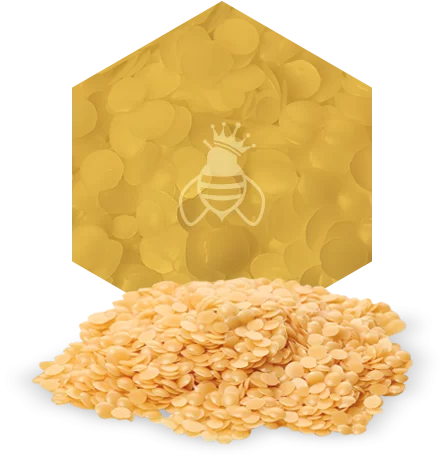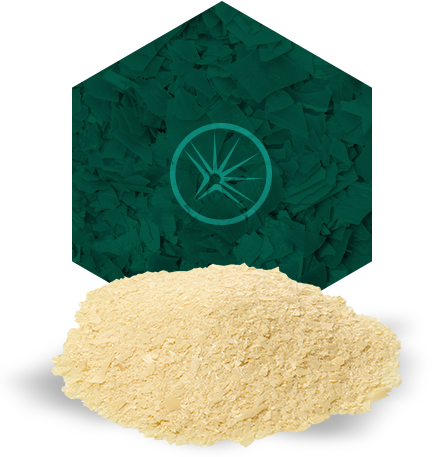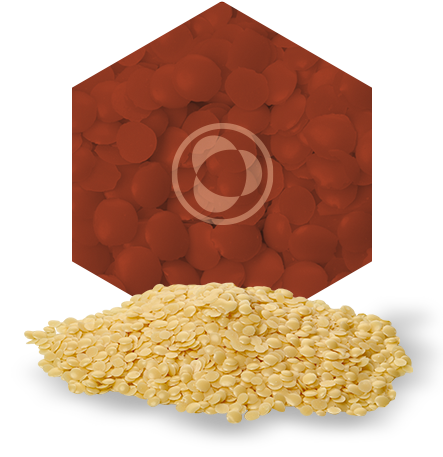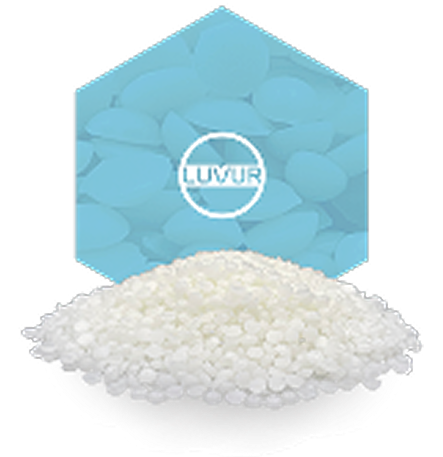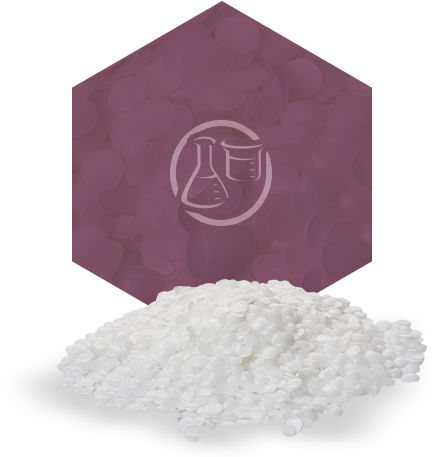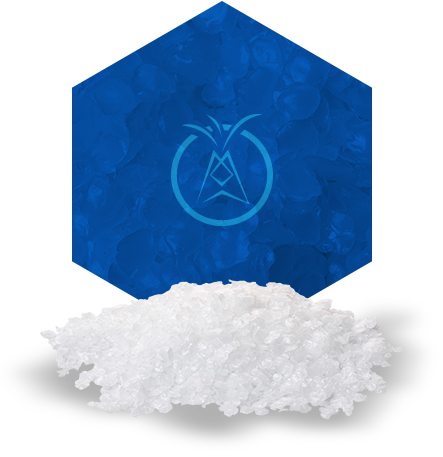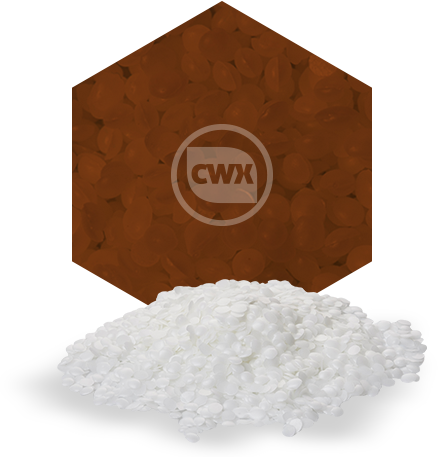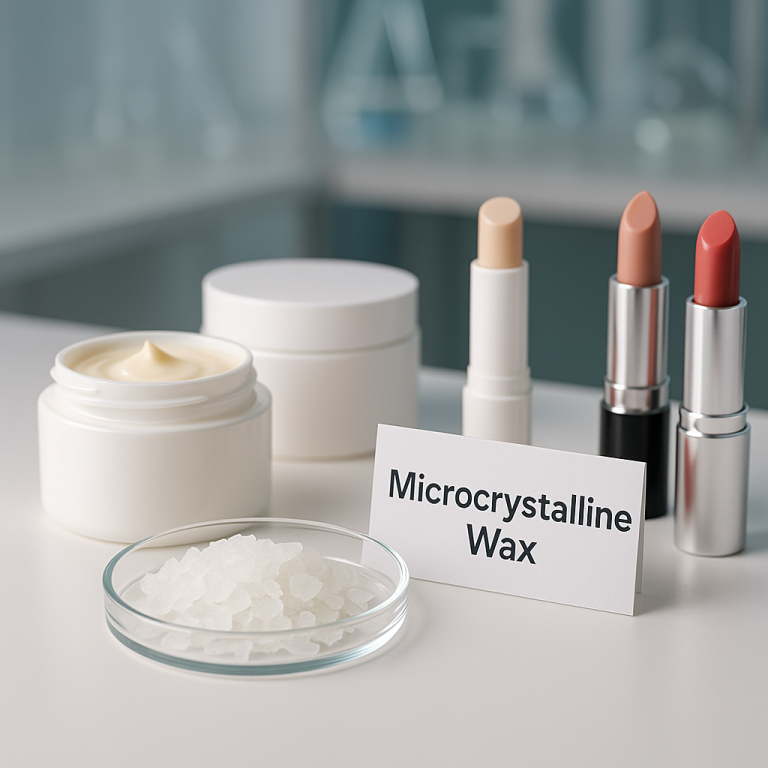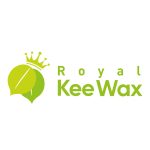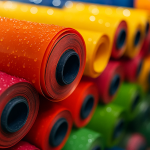In the cosmetics world, where every ingredient matters and every sensation is intentional, microcrystalline waxes play a more important role than most people realize. Far from being just a structuring agent, this type of wax contributes to stability, texture, protection, and finish across a wide range of personal care products.
In this article, we dive into how cosmetic formulations have evolved thanks to the latest innovations in microcrystalline waxes — and how at Multiceras, we work closely with labs, brands, and distributors to deliver solutions tailored to every need.
What is microcrystalline wax?
Microcrystalline wax is a petroleum-derived wax known for its fine crystalline structure, which makes it more flexible and tacky than paraffin wax. This texture gives it the ability to hold oils, improve product cohesion, and give body to cosmetic formulations.
It is odorless, white to light yellow, and melts between 60 and 90 °C. These features make it especially useful for heat-resistant, oil-rich, and pigment-dense formulas.
Why use it in cosmetics?
Microcrystalline wax is a favorite in personal care formulations for three main reasons:
- Texture & stability
It helps build structure and viscosity, ensuring that formulas hold their shape — even under heat or extended use. - Versatility
It’s used in lip balms, creams, deodorants, sunscreens, eyeliners, and more. It can also help control the hardness or softness of a product. - Oil and active retention
It binds well with oils, pigments, and lipophilic ingredients like botanical extracts and vitamins, without compromising stability.
Where it shows up: common applications
- Lipsticks & balms
Provides smooth texture, prevents color bleeding, and gives a firm, shapely finish. - Protective & anti-aging creams
Creates a protective barrier that helps reduce moisture loss and improve skin hydration. - Solid makeup sticks (eyeliners, blush sticks)
Adds rigidity for better application and product durability. - Deodorants and depilatory creams
Stabilizes the formula and allows for consistent release of active ingredients.
What’s new? Cleaner, more sensory-friendly, and sustainable options
Cosmetics are shifting toward safer, cleaner, and more sustainable formulations — and microcrystalline waxes have evolved to match that trend. New-generation waxes offer:
- Higher purity and better refinement, reducing impurities.
- Compatibility with clean beauty standards and “non-toxic” or “dermatologist-tested” claims.
- Vegan-friendly formulations, without animal-derived ingredients.
- Enhanced dispersion of pigments and active botanicals for more effective products.
How to choose the right wax?
Not all microcrystalline waxes are created equal. Their melting point, viscosity, hardness, and oil compatibility vary depending on the intended application.
At Multiceras, we guide our clients in selecting the wax that best suits their product goals and process requirements. We consider:
- The type of base (water-based, oil-based, anhydrous)
- The desired skin feel (light, rich, occlusive)
- The expected shelf life and packaging conditions
- The compatibility with active ingredients and production methods
Multiceras: Made-to-measure wax solutions
Our range of microcrystalline waxes includes various grades in terms of color, texture, and purity. We work with labs of all sizes — from indie beauty brands to large-scale manufacturers — to co-create formulas that stand out in both performance and sensorial experience.
We also provide technical consulting, stability testing, and custom recommendations to support every stage of your development process.
Interested in our cosmetic wax portfolio?
Let’s talk. Whether you’re working on a lip balm, a solid perfume, or a next-gen skincare formula, we can help you find the right microcrystalline wax to bring your idea to life.


